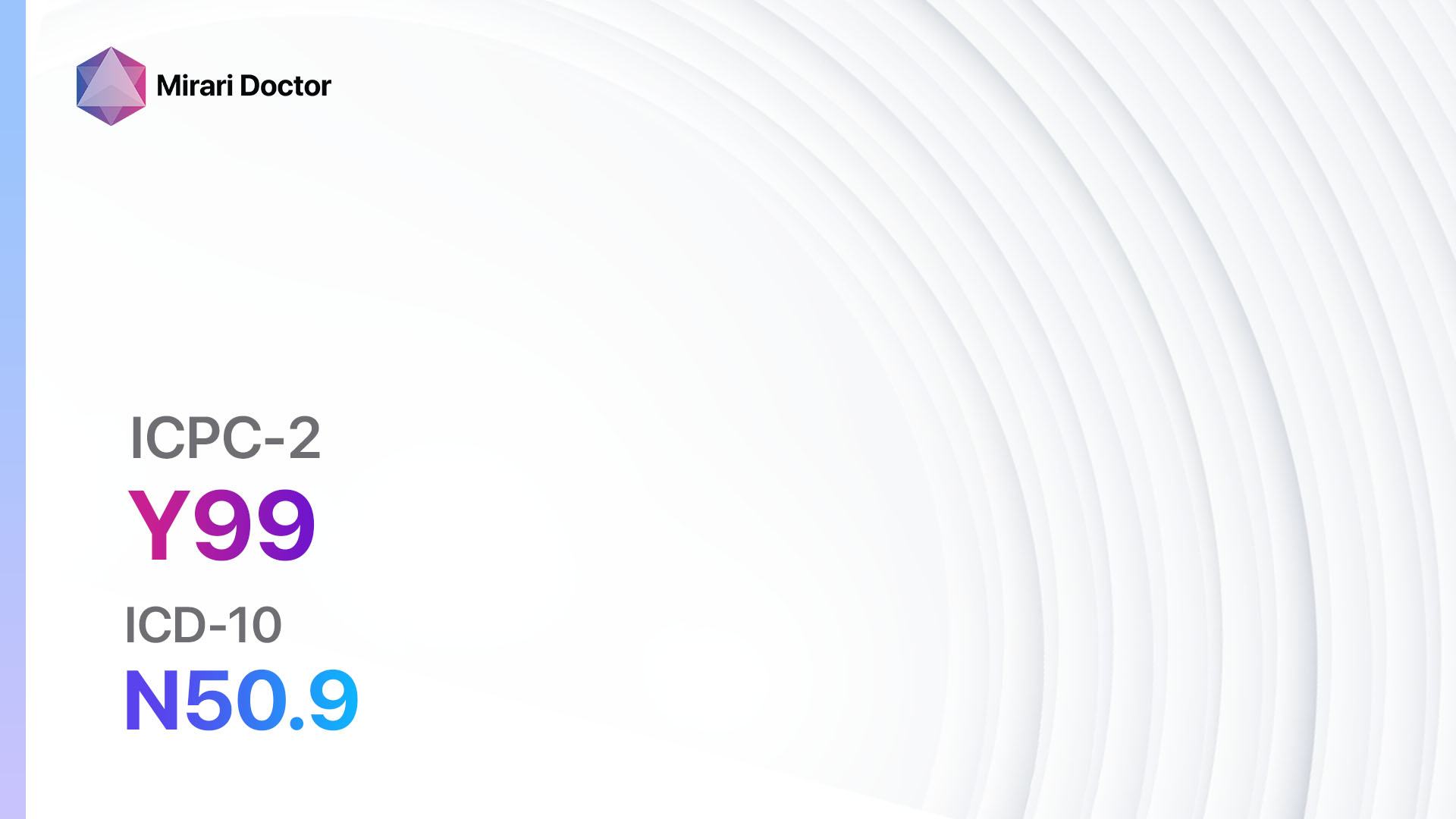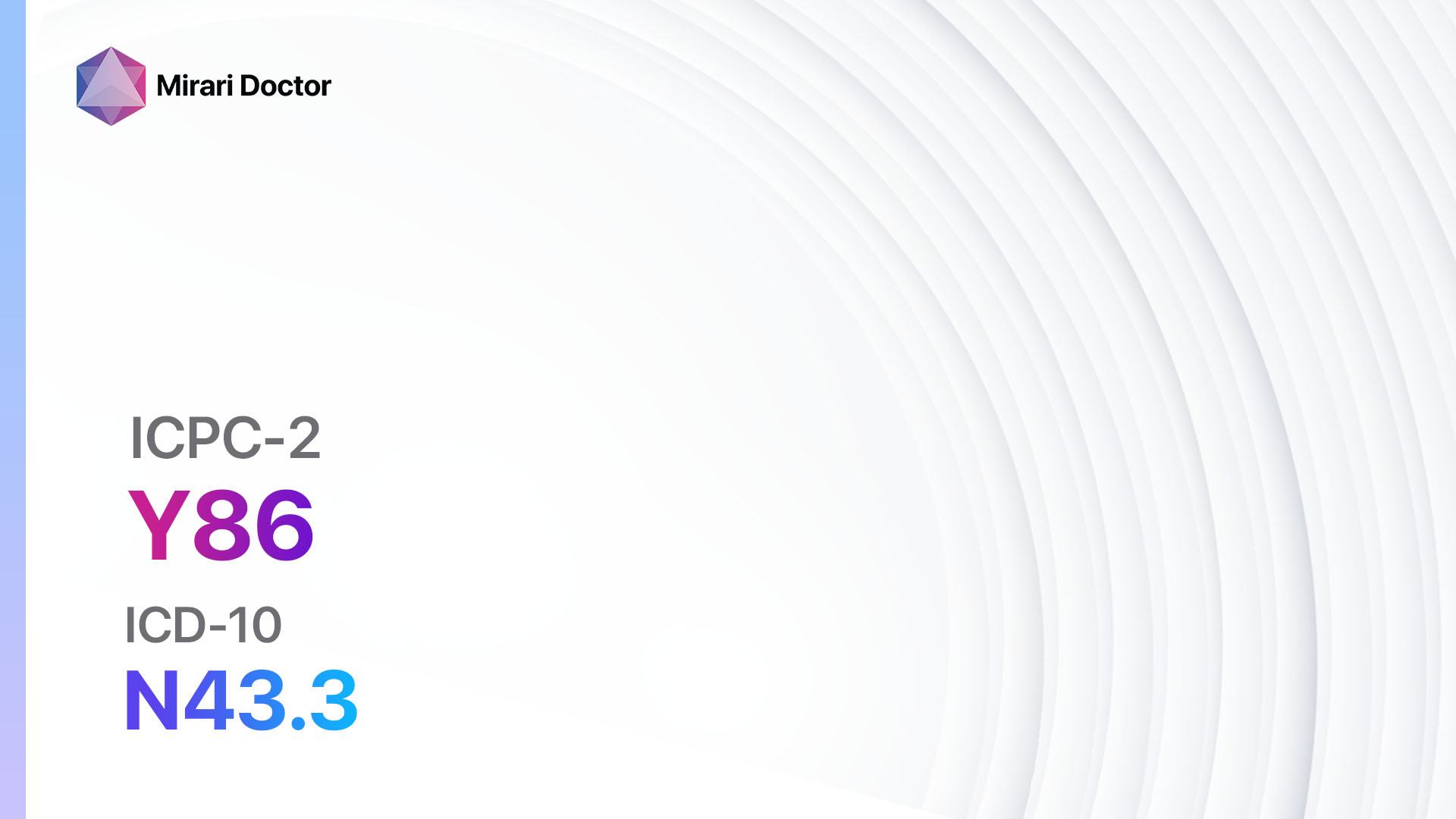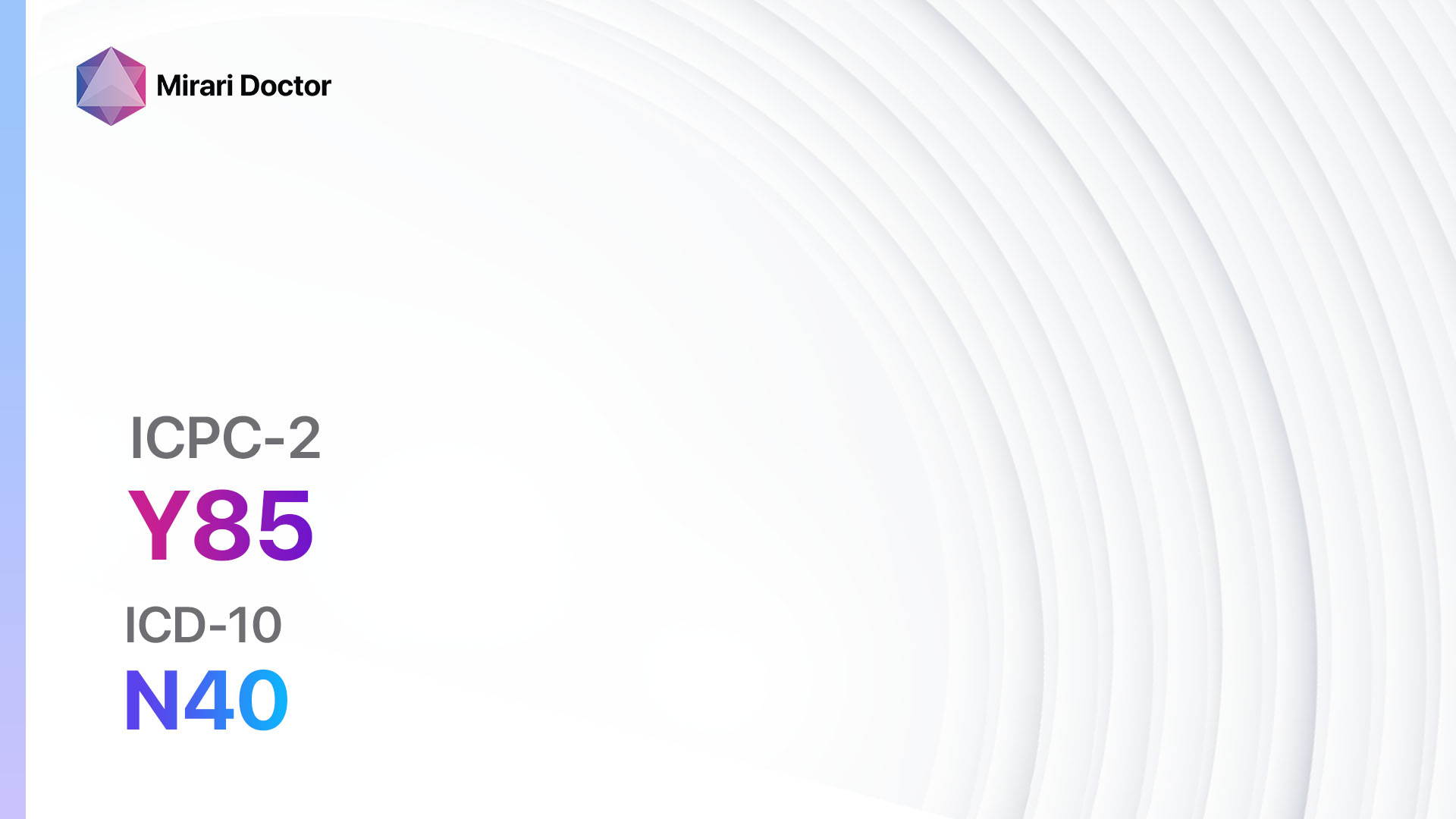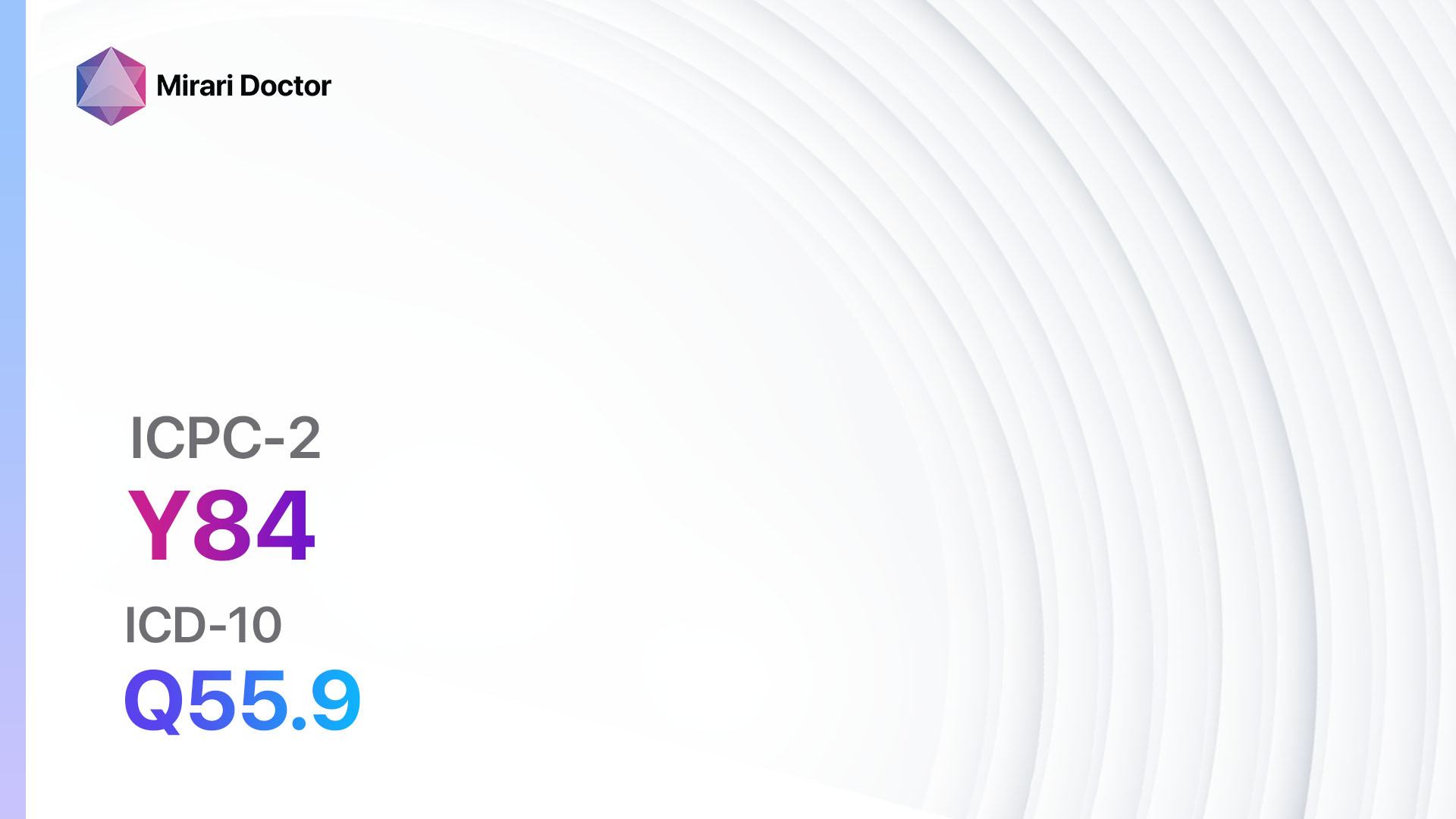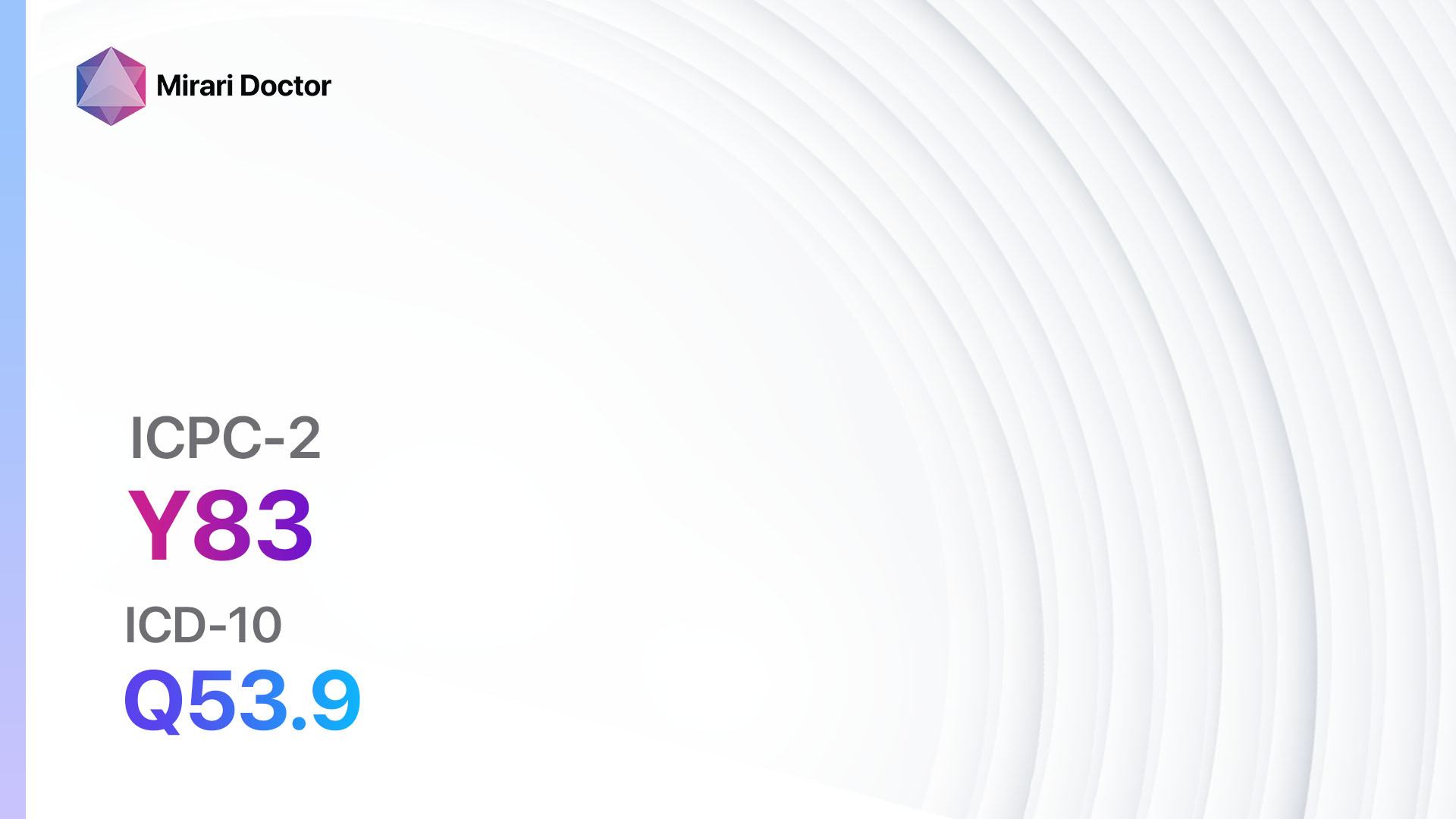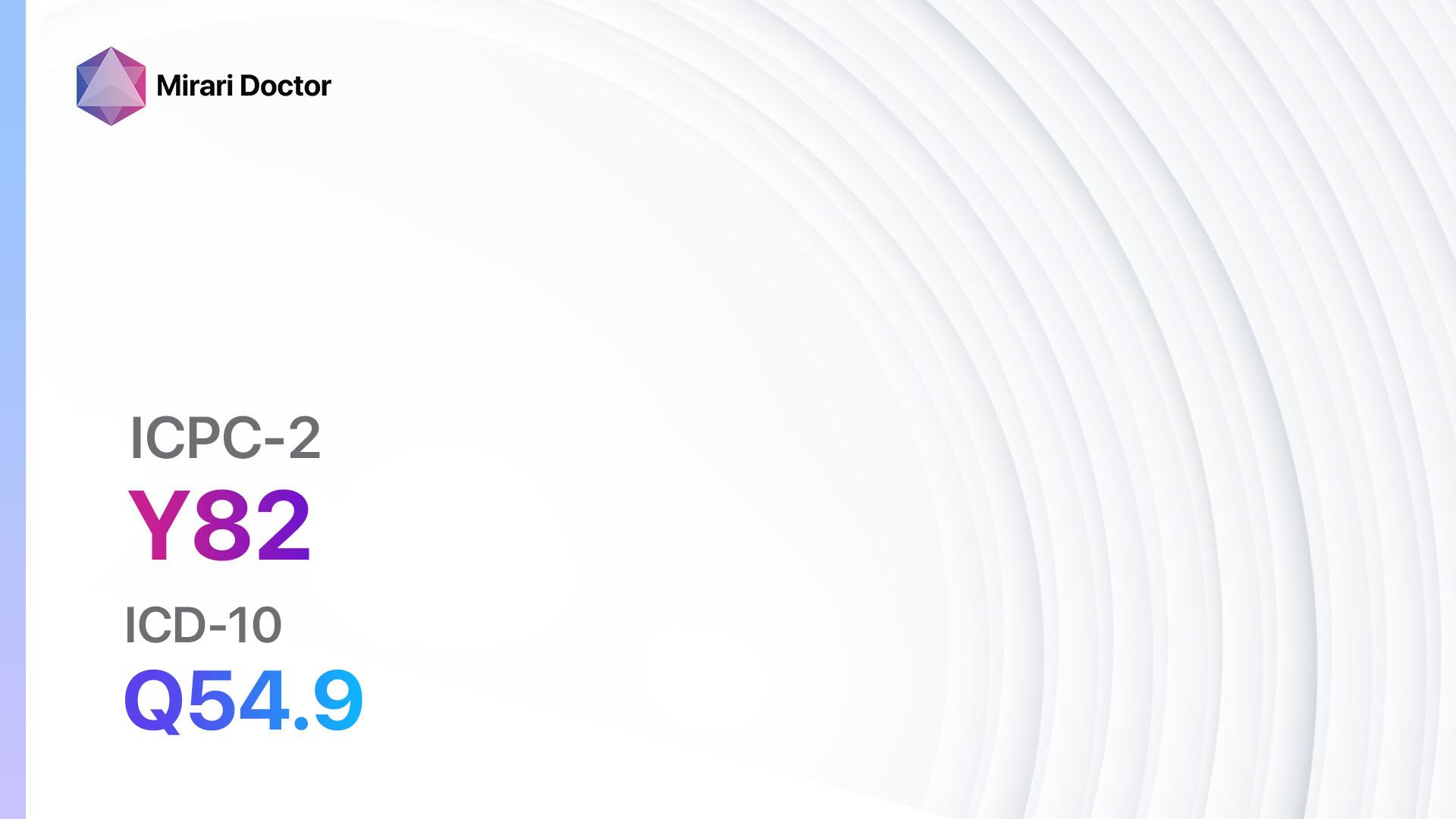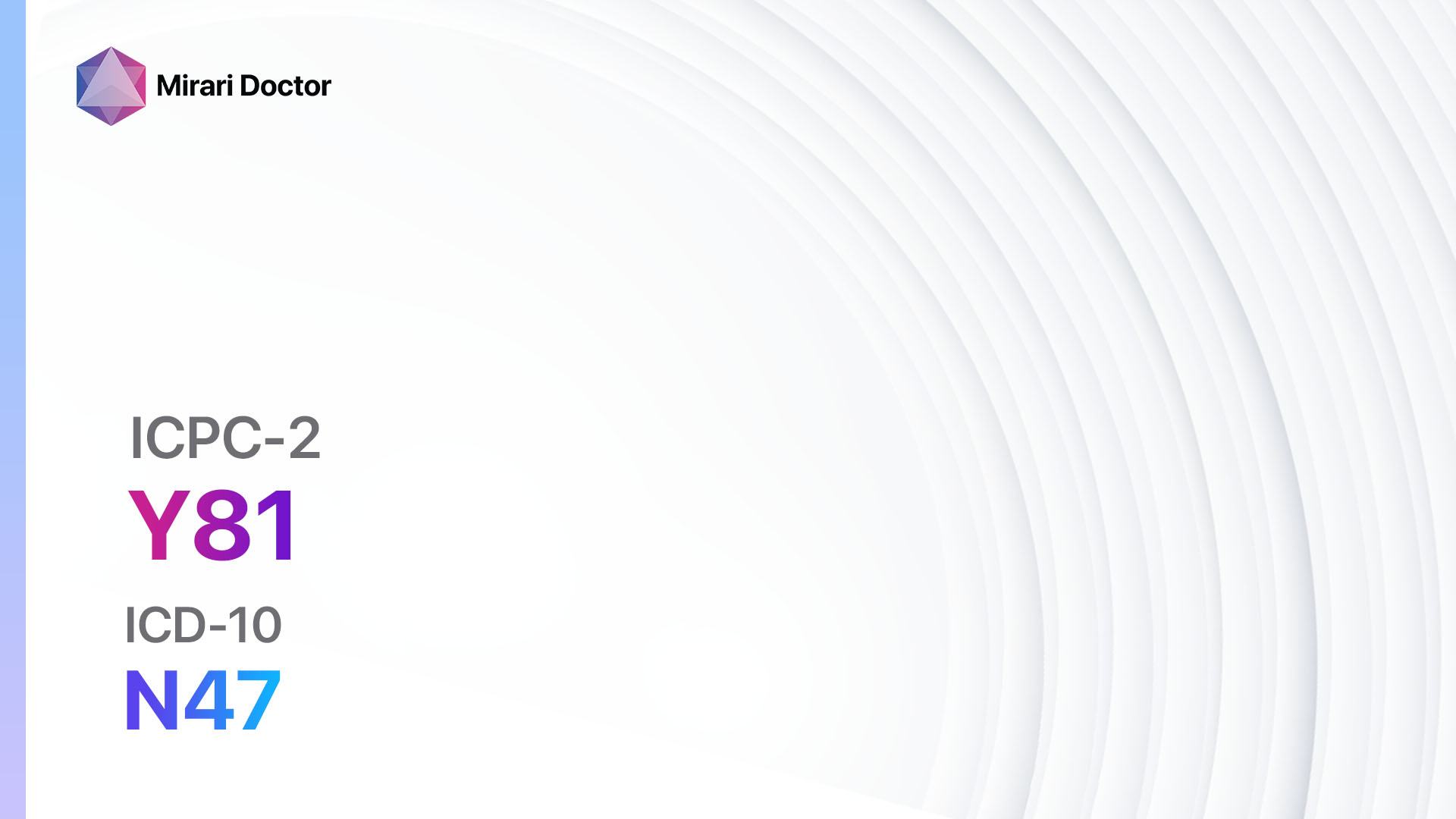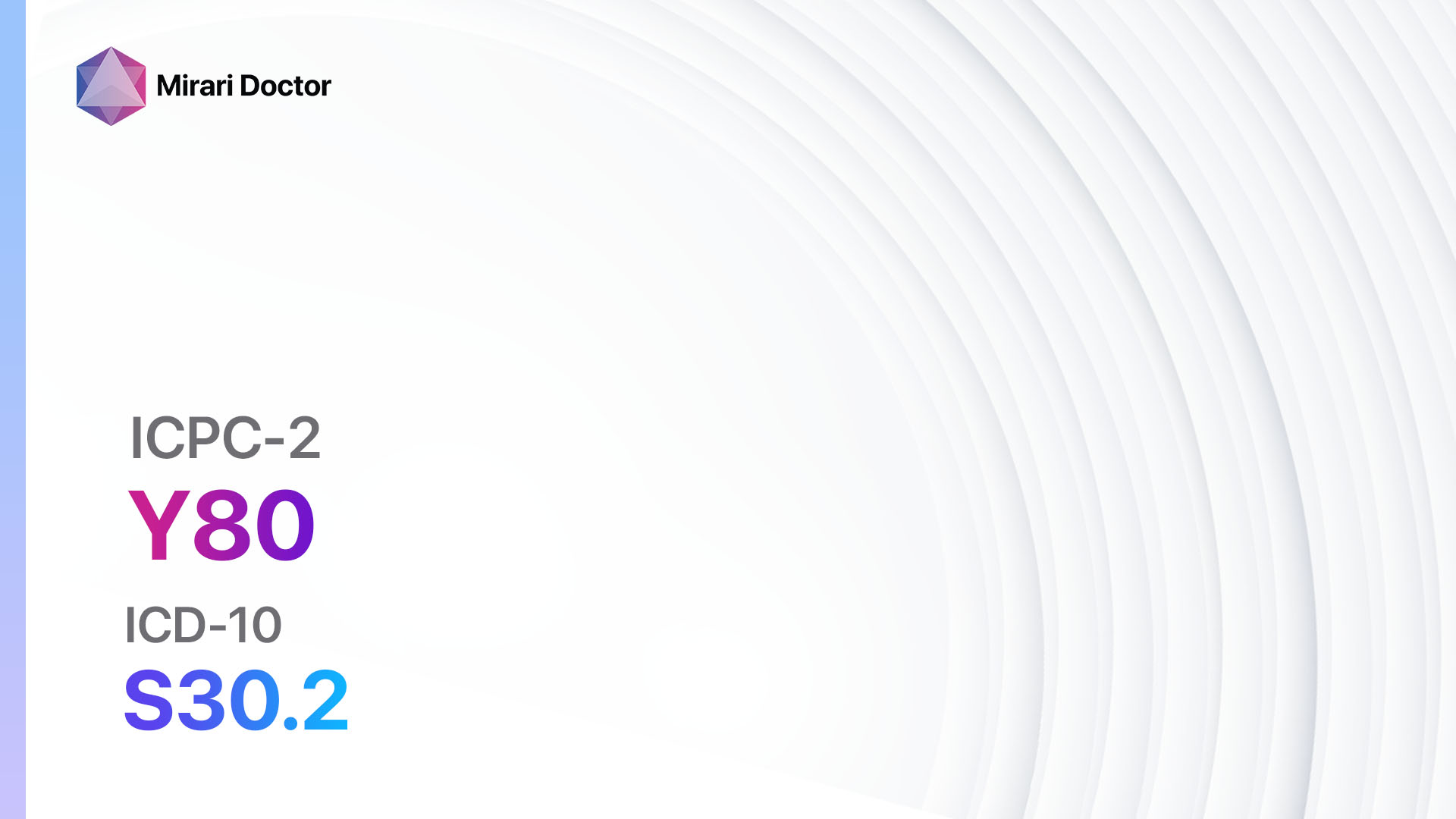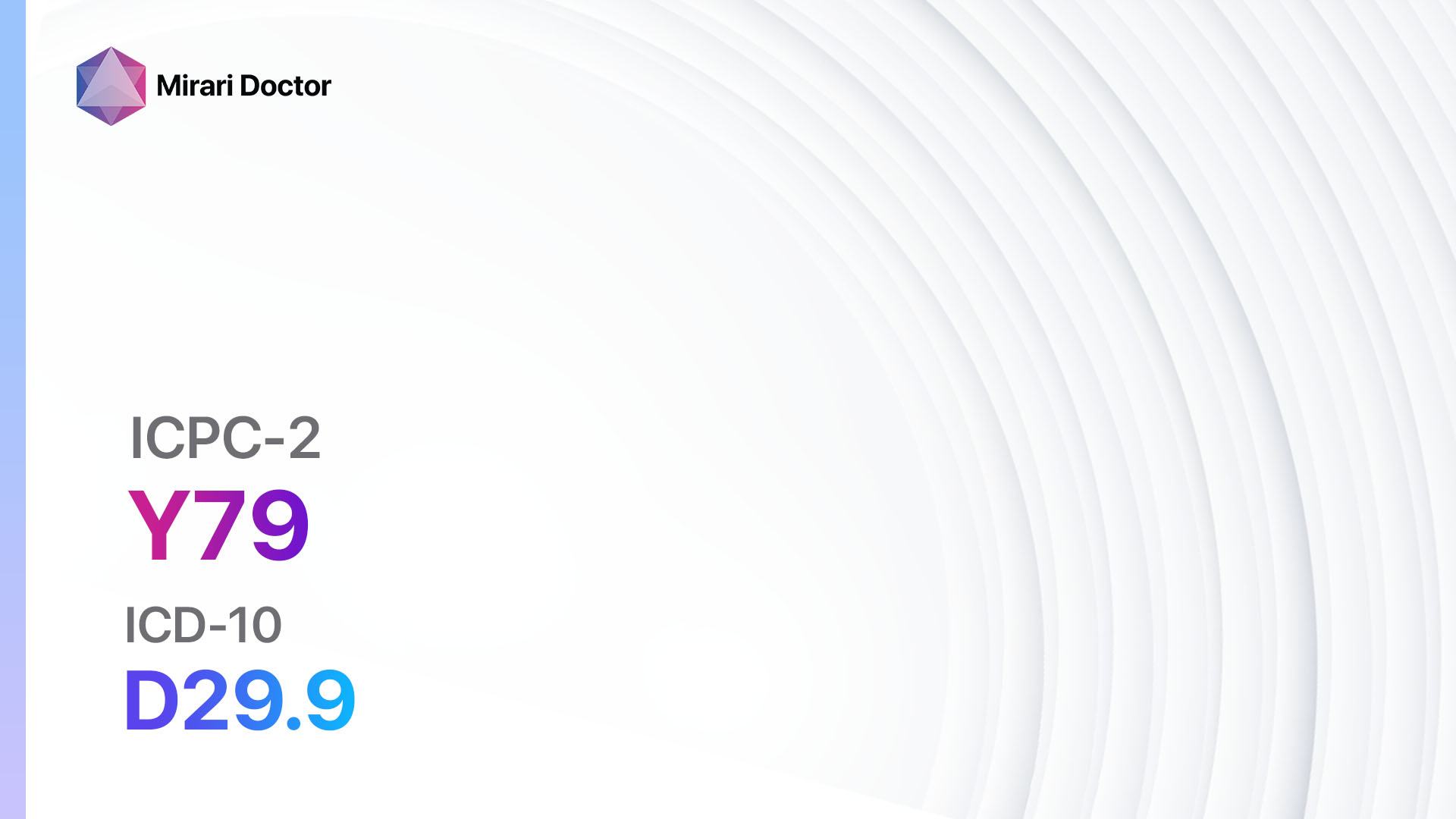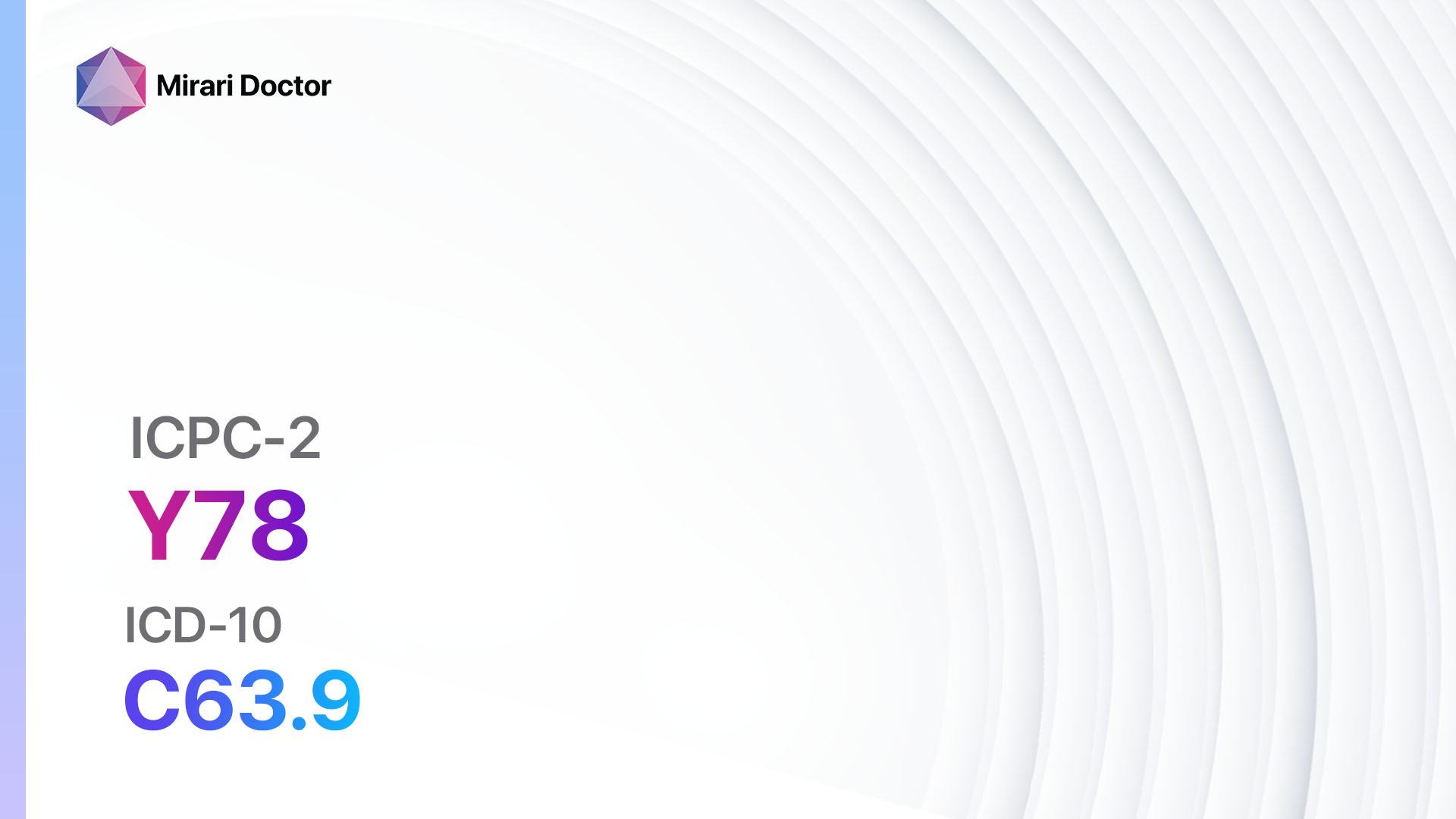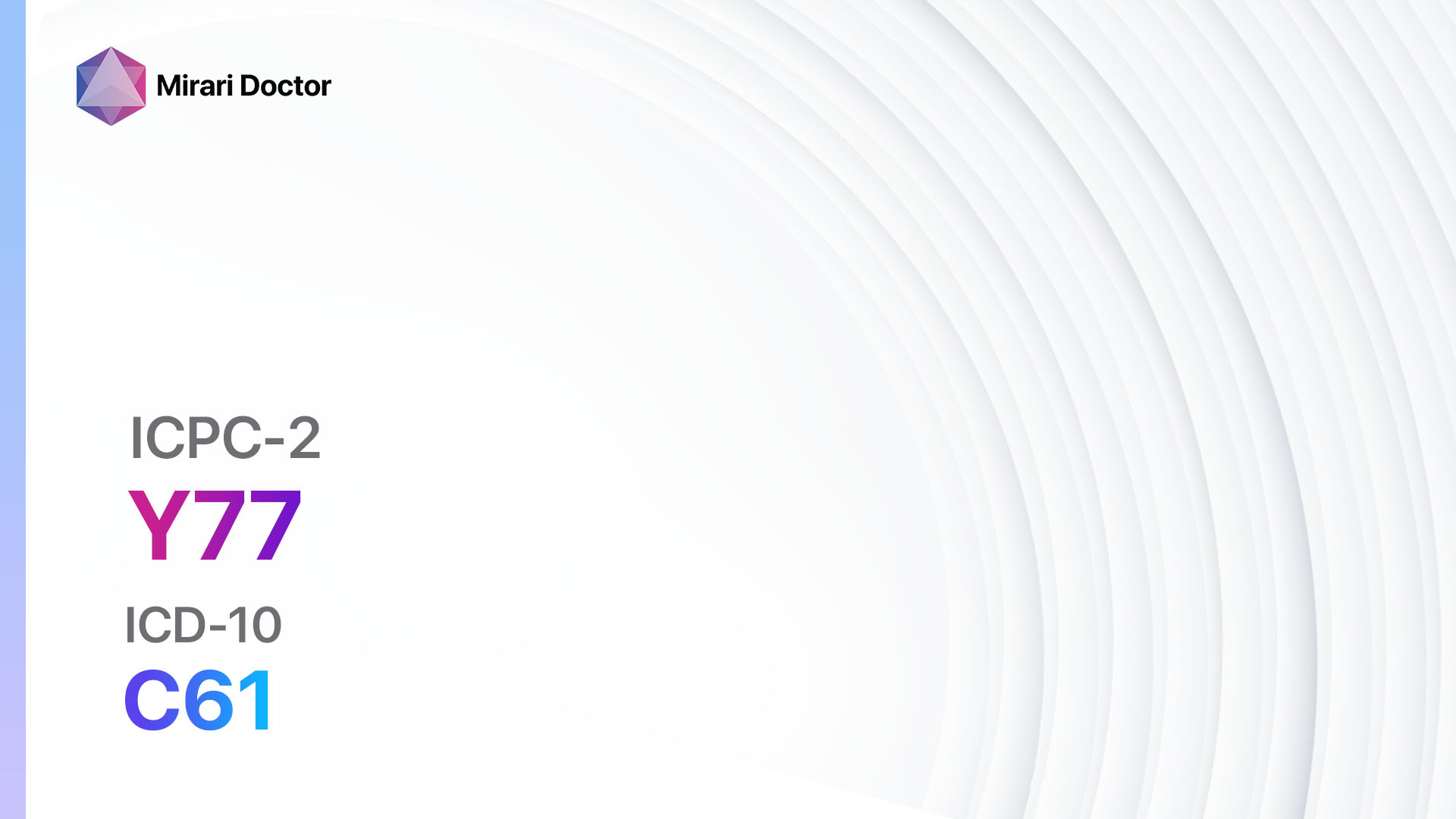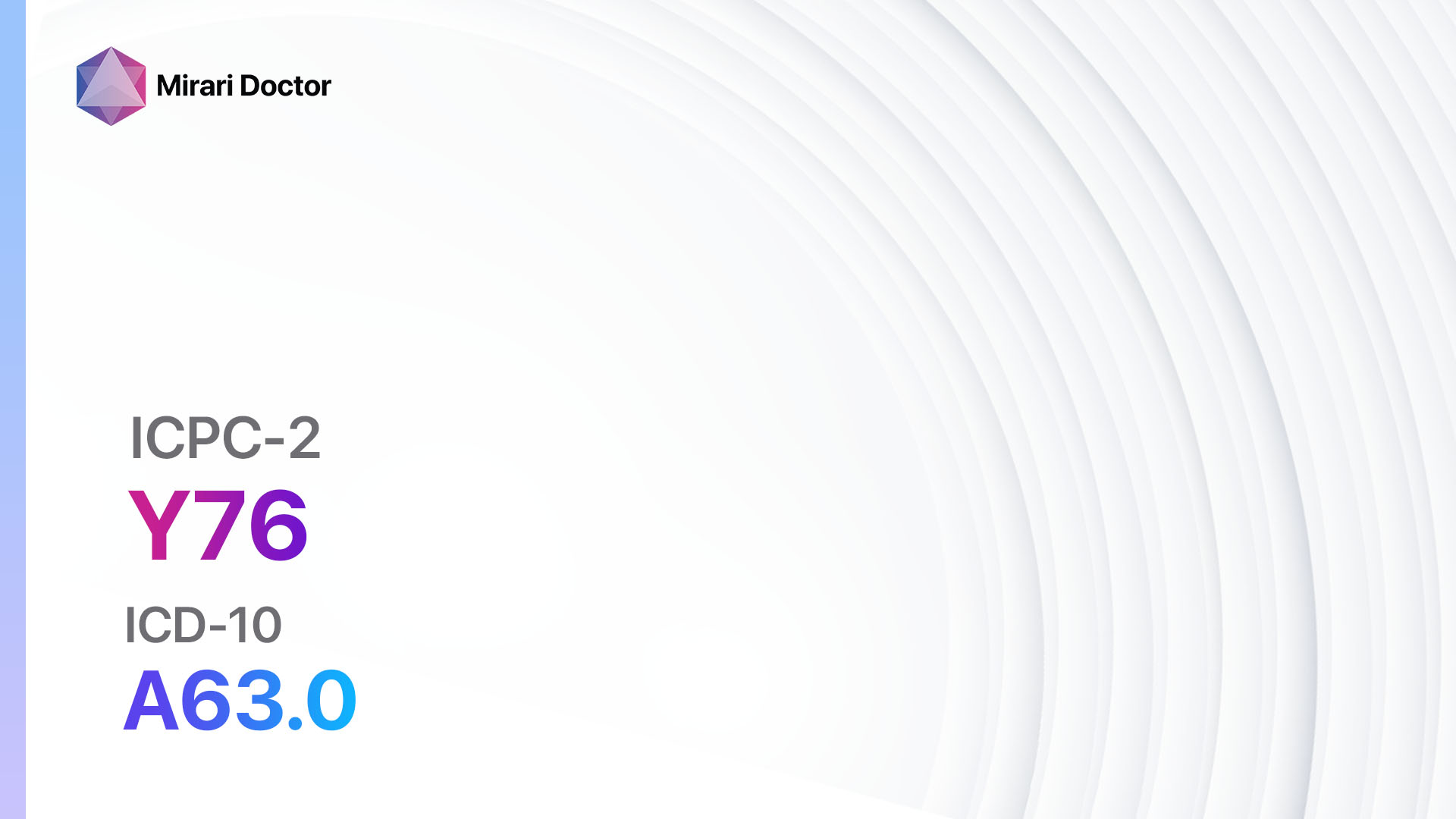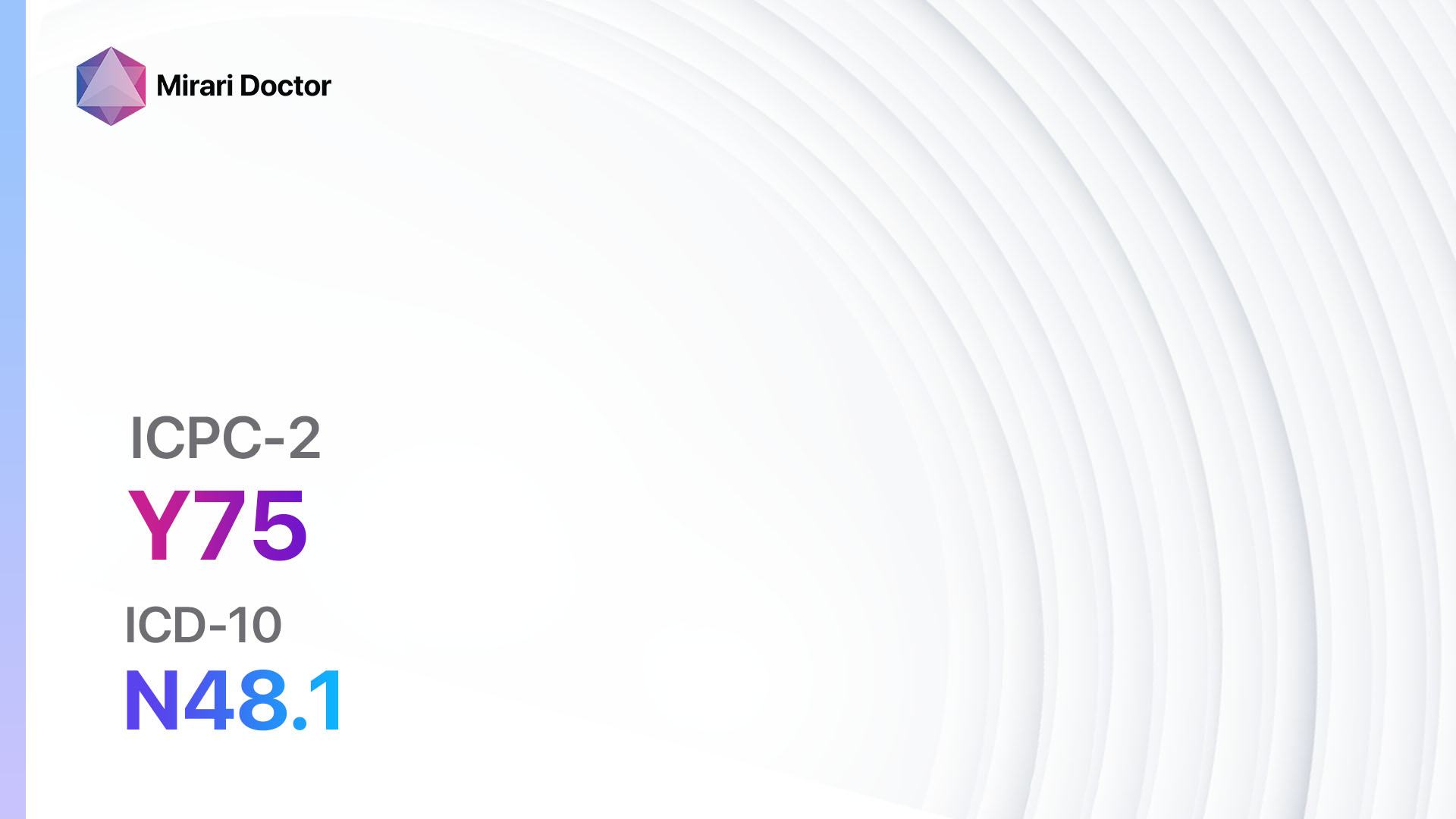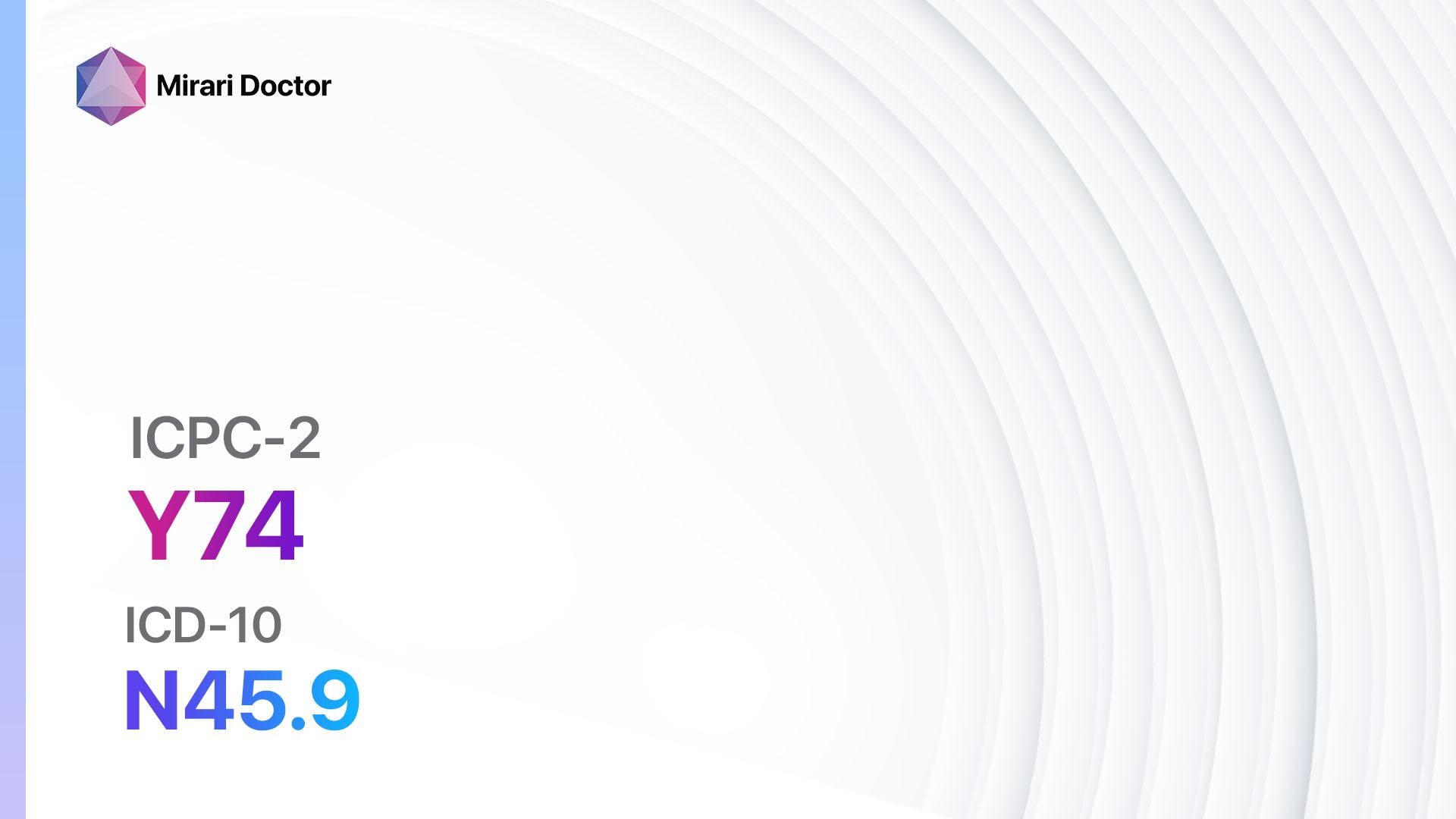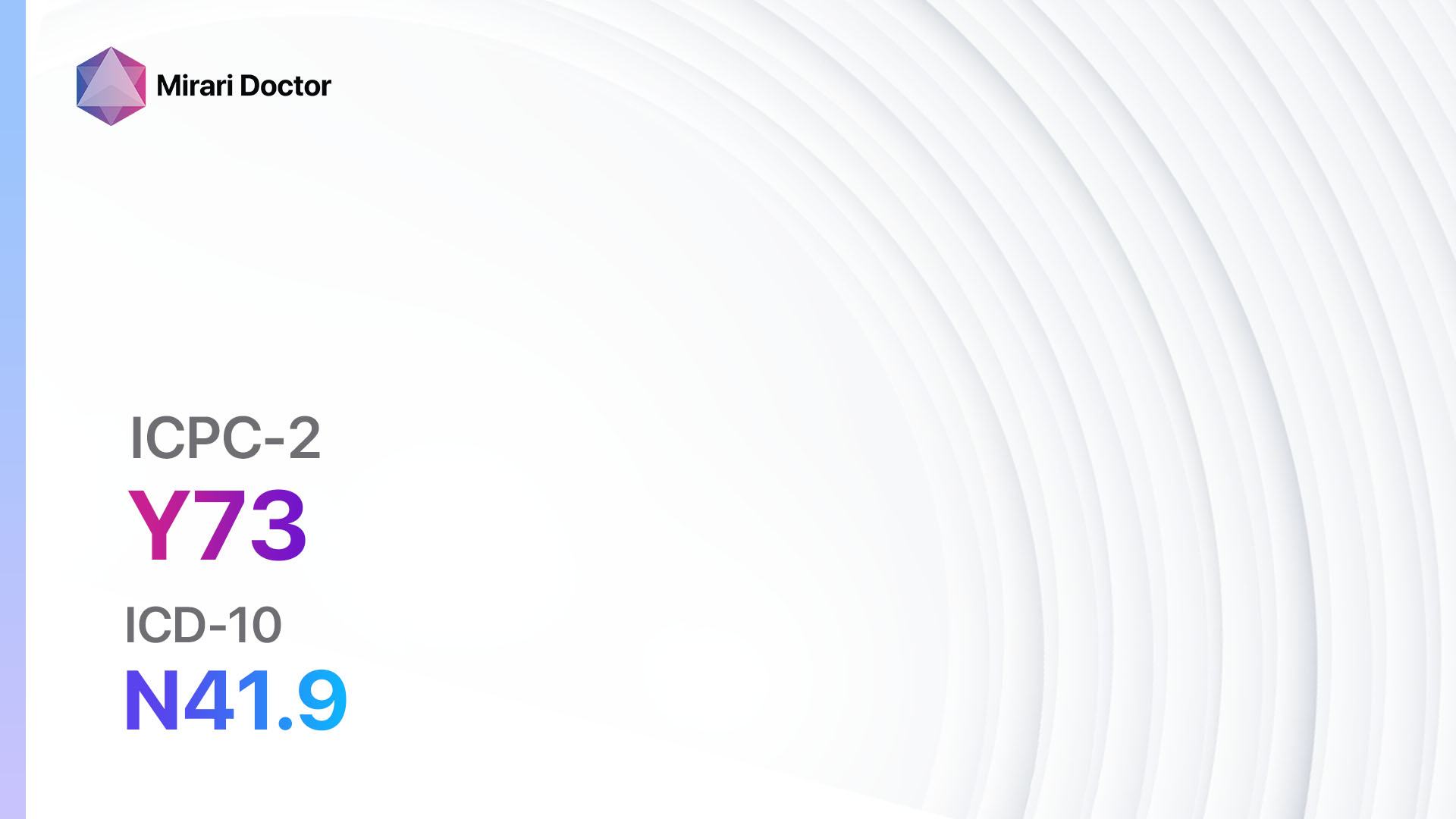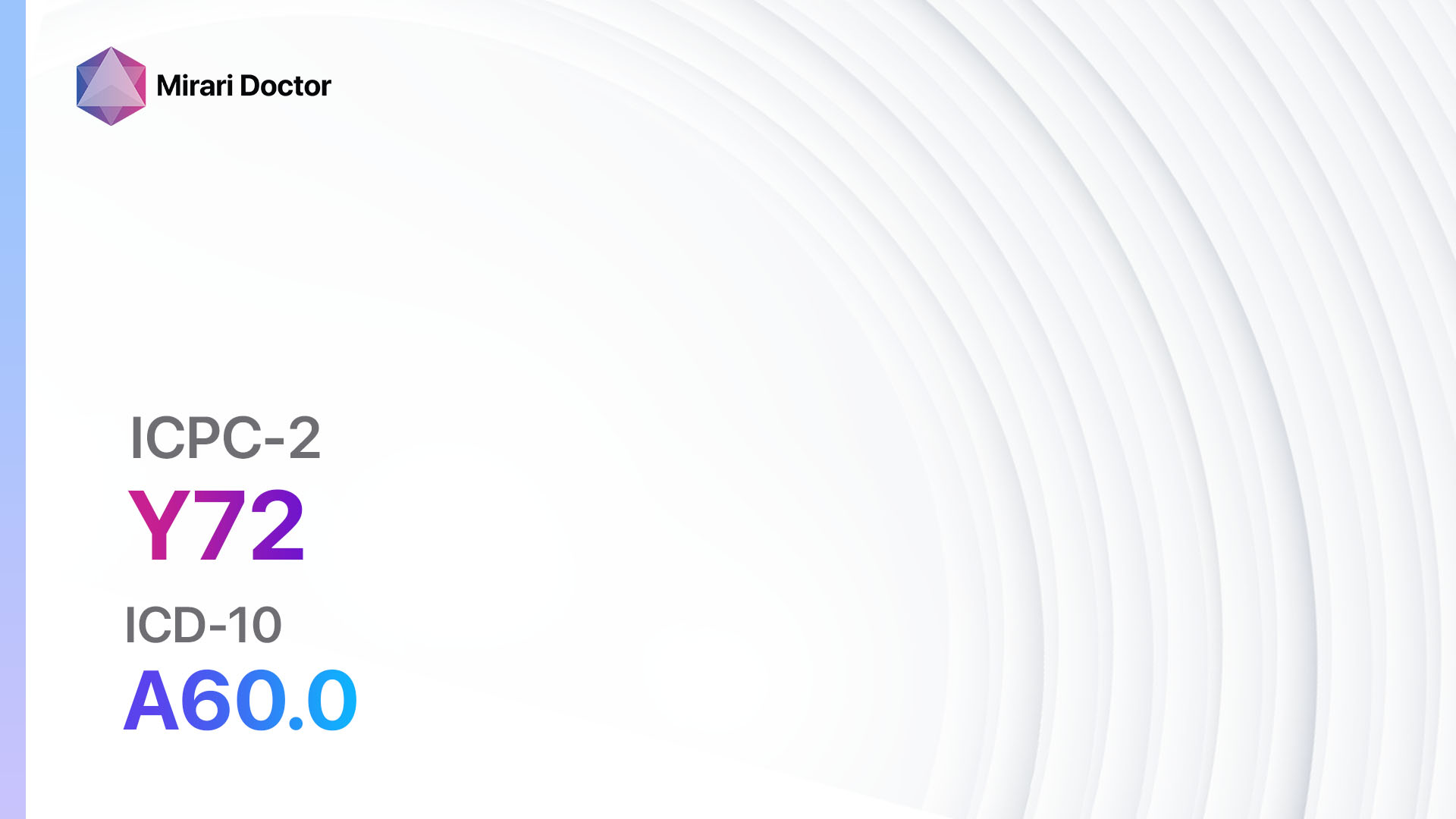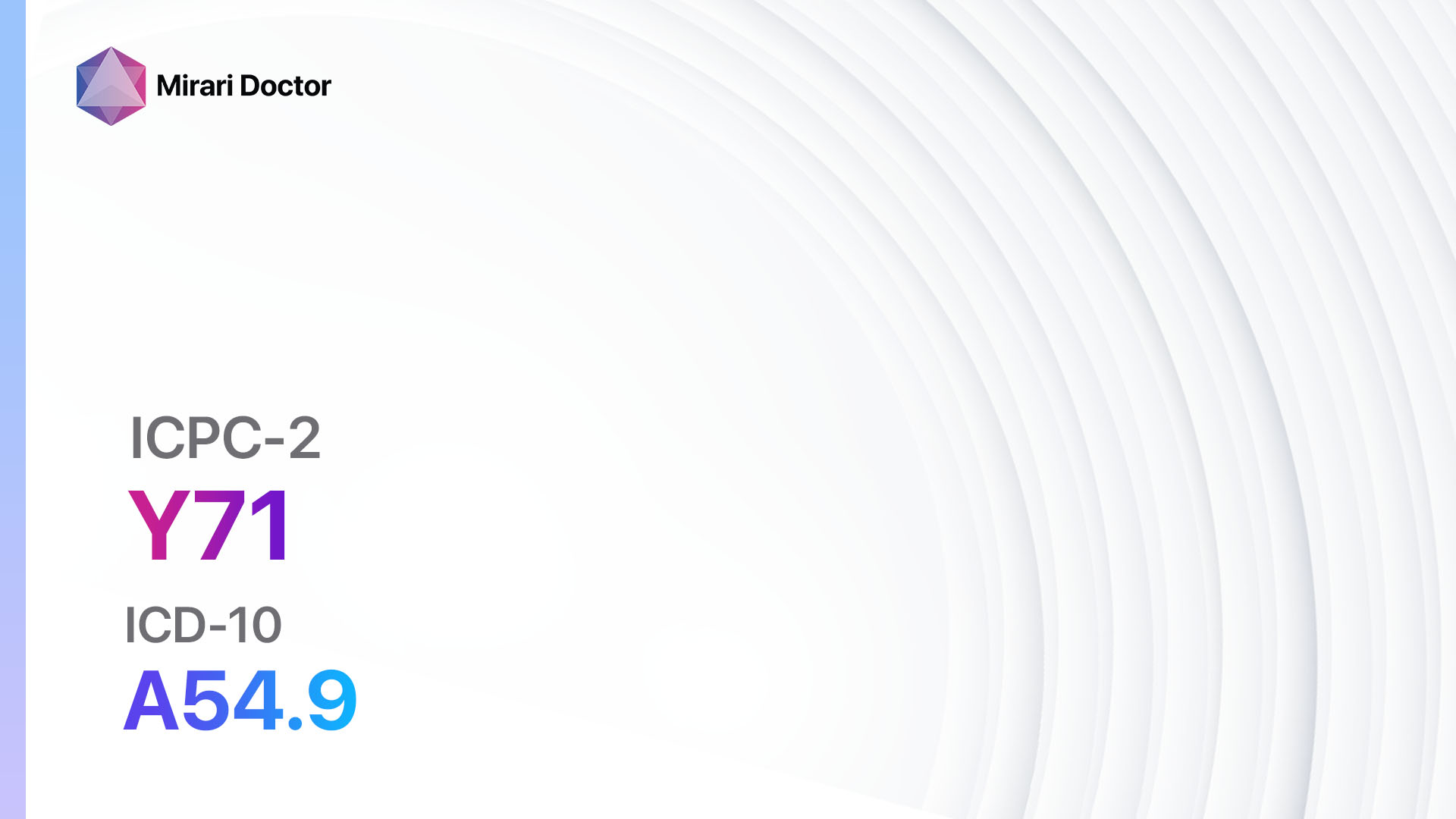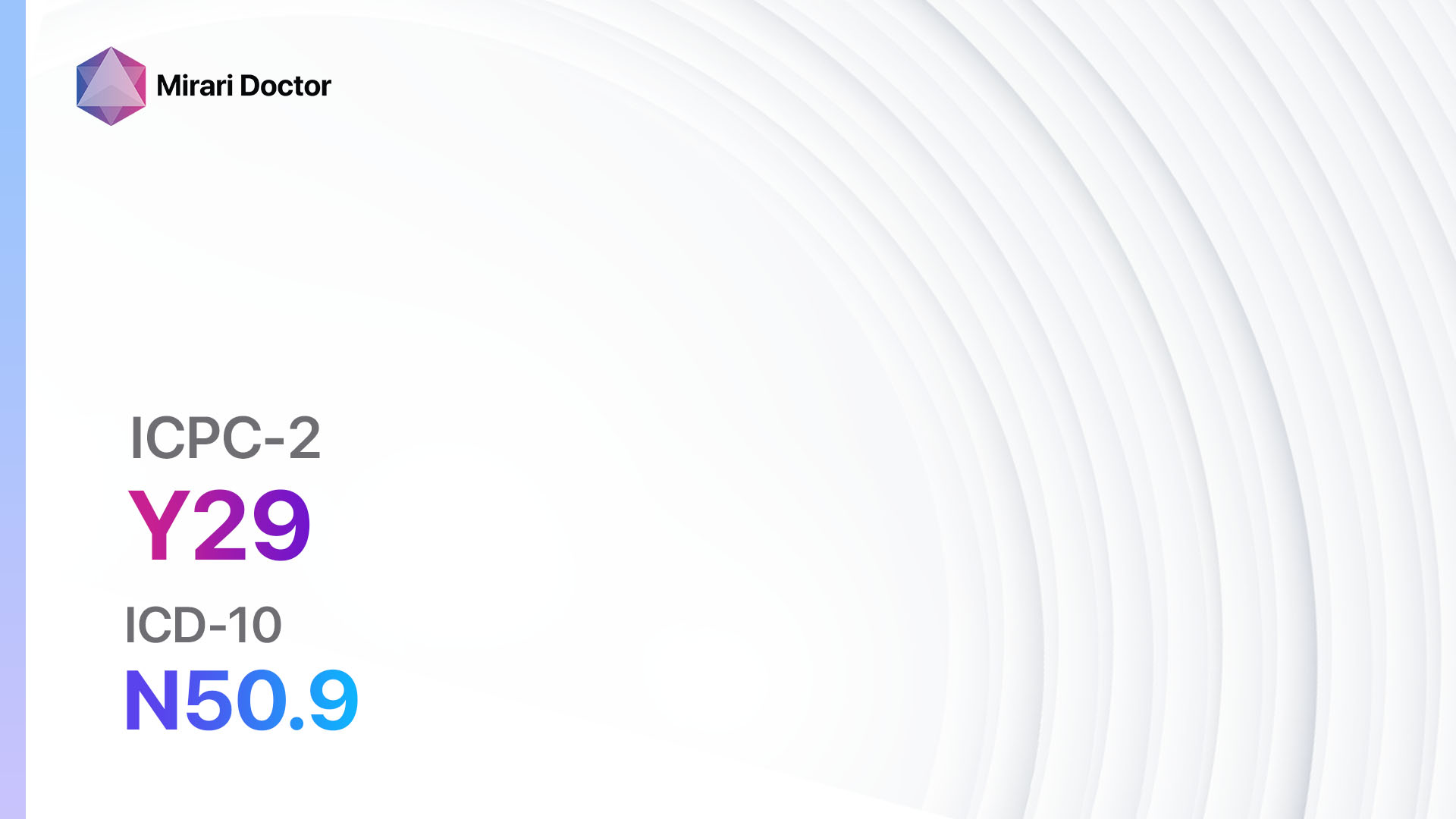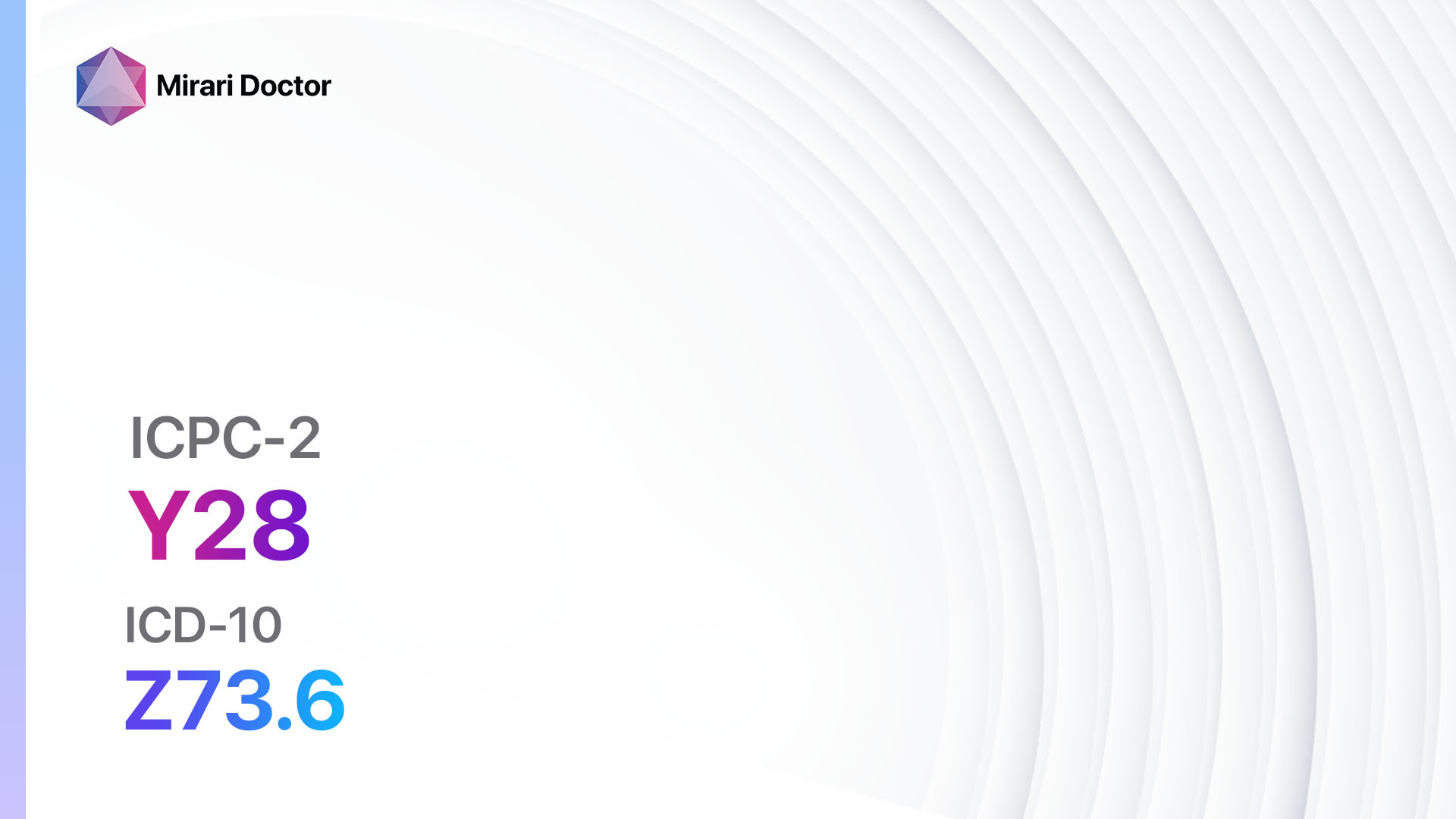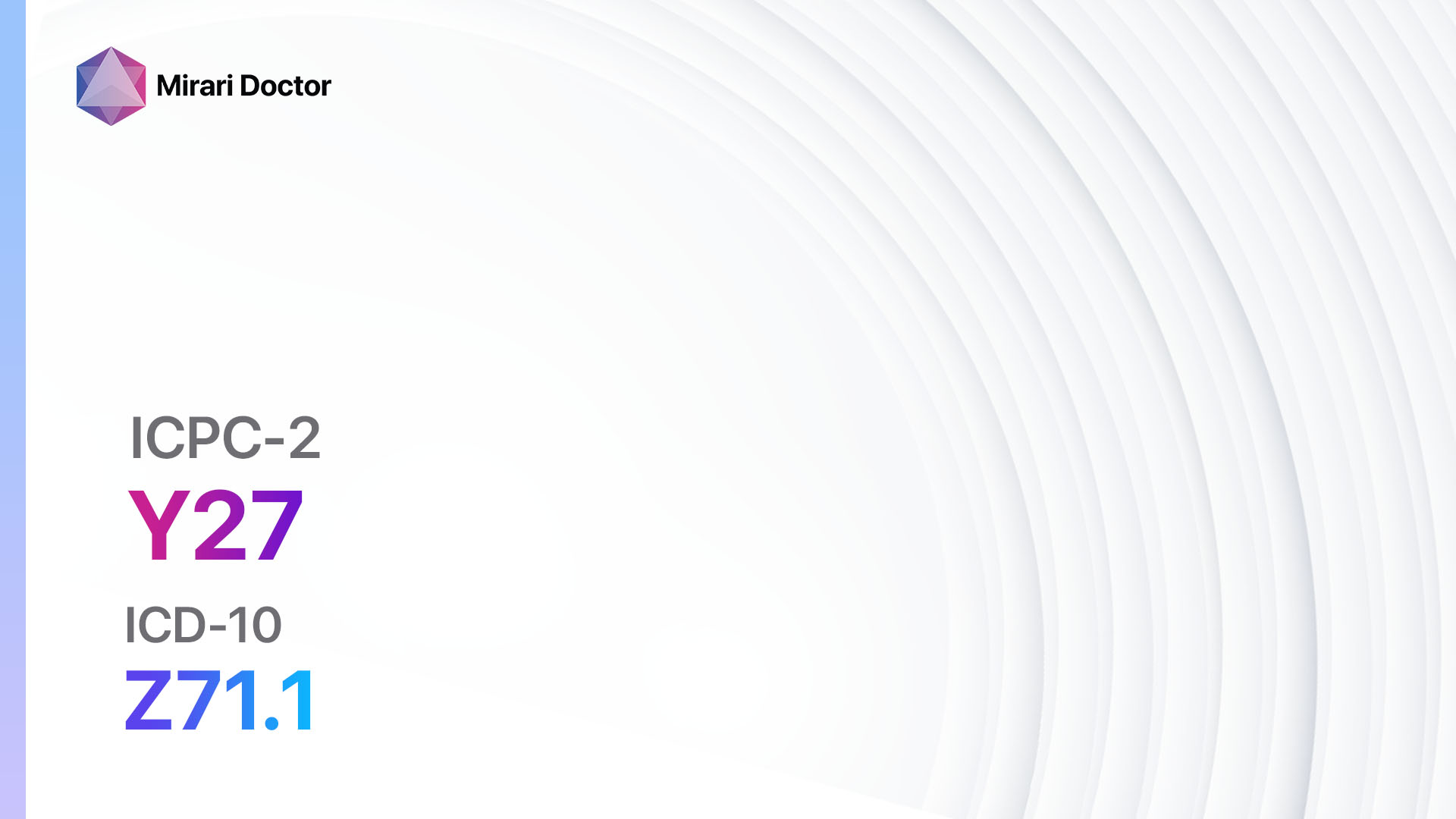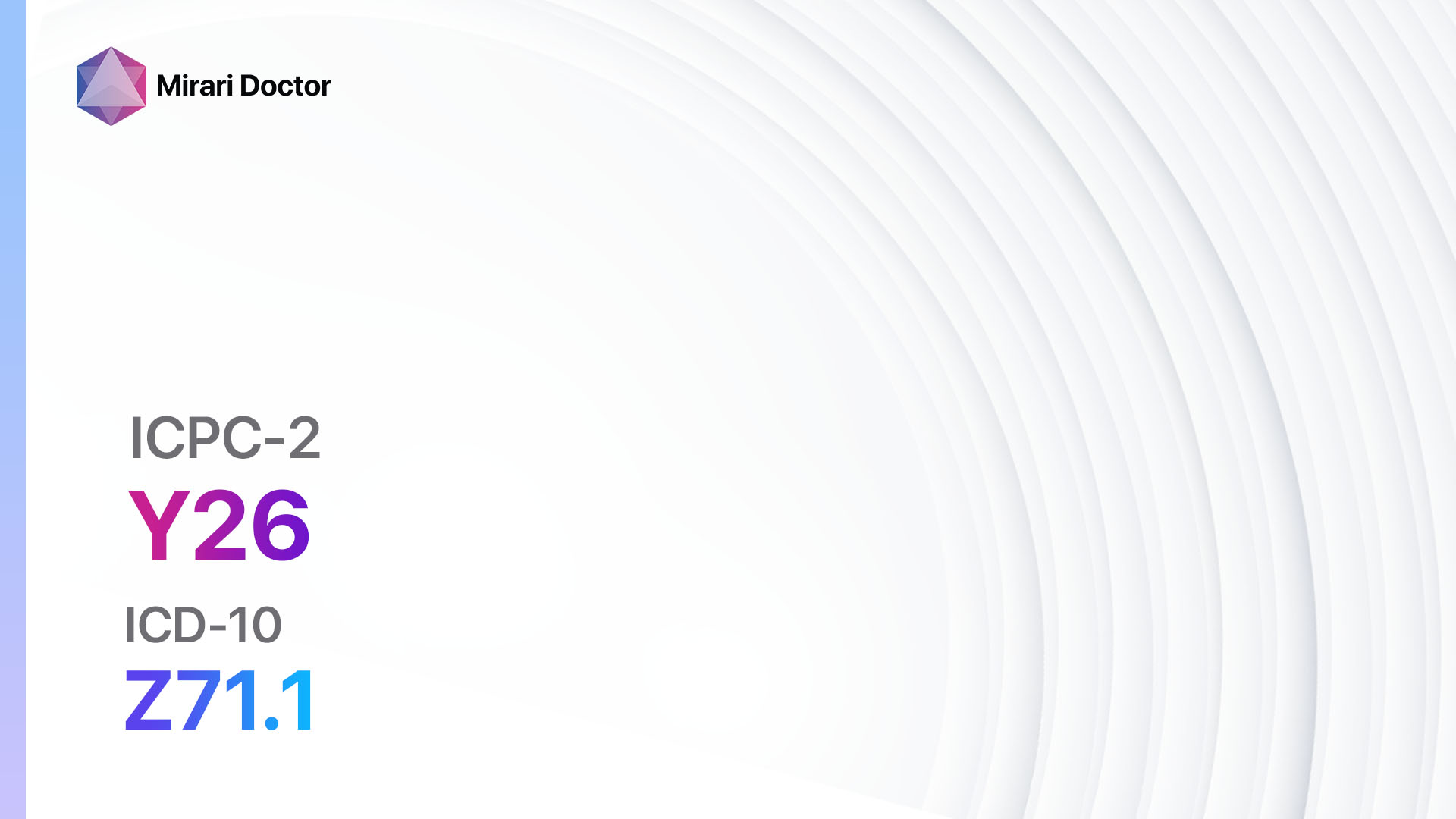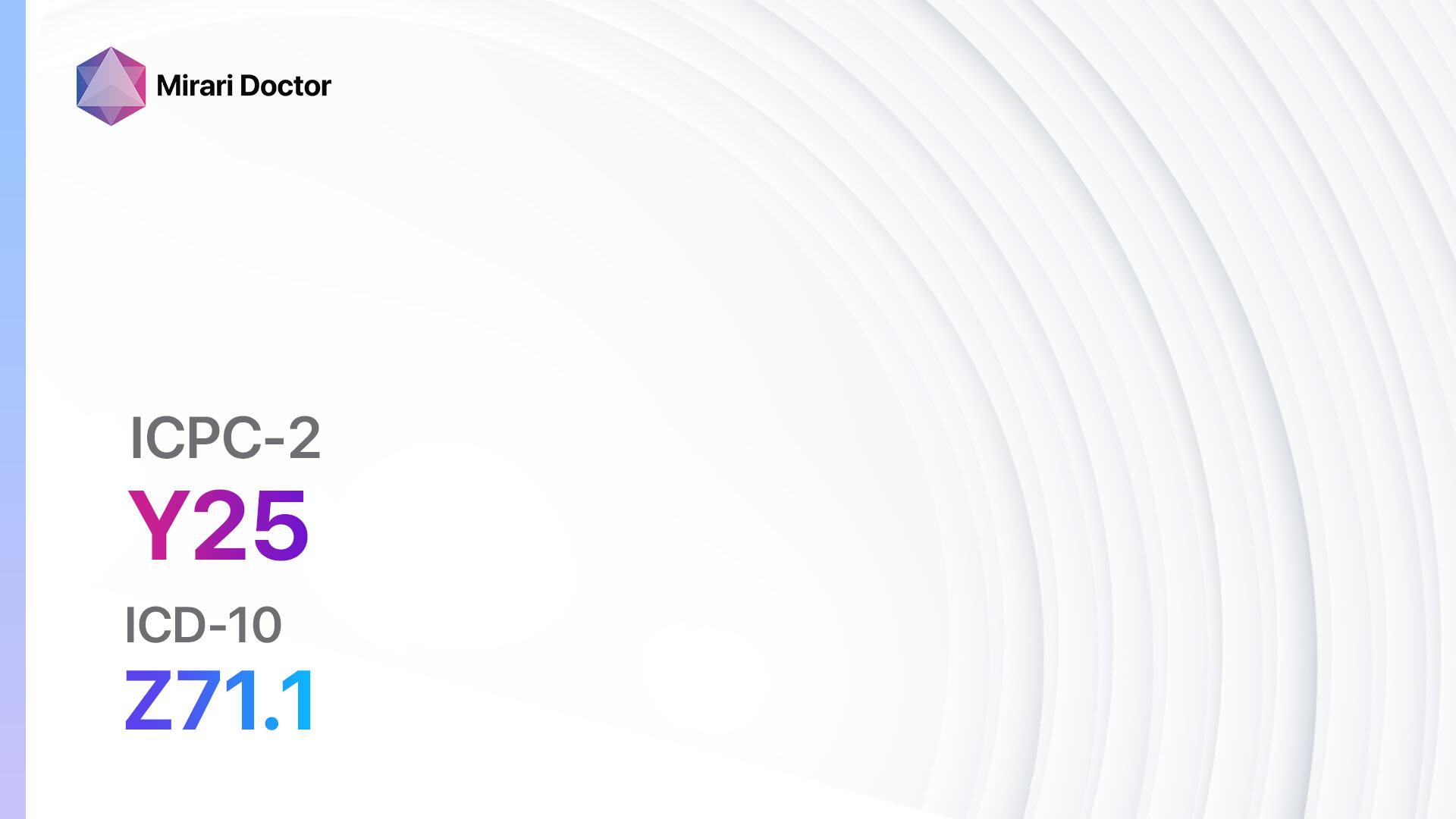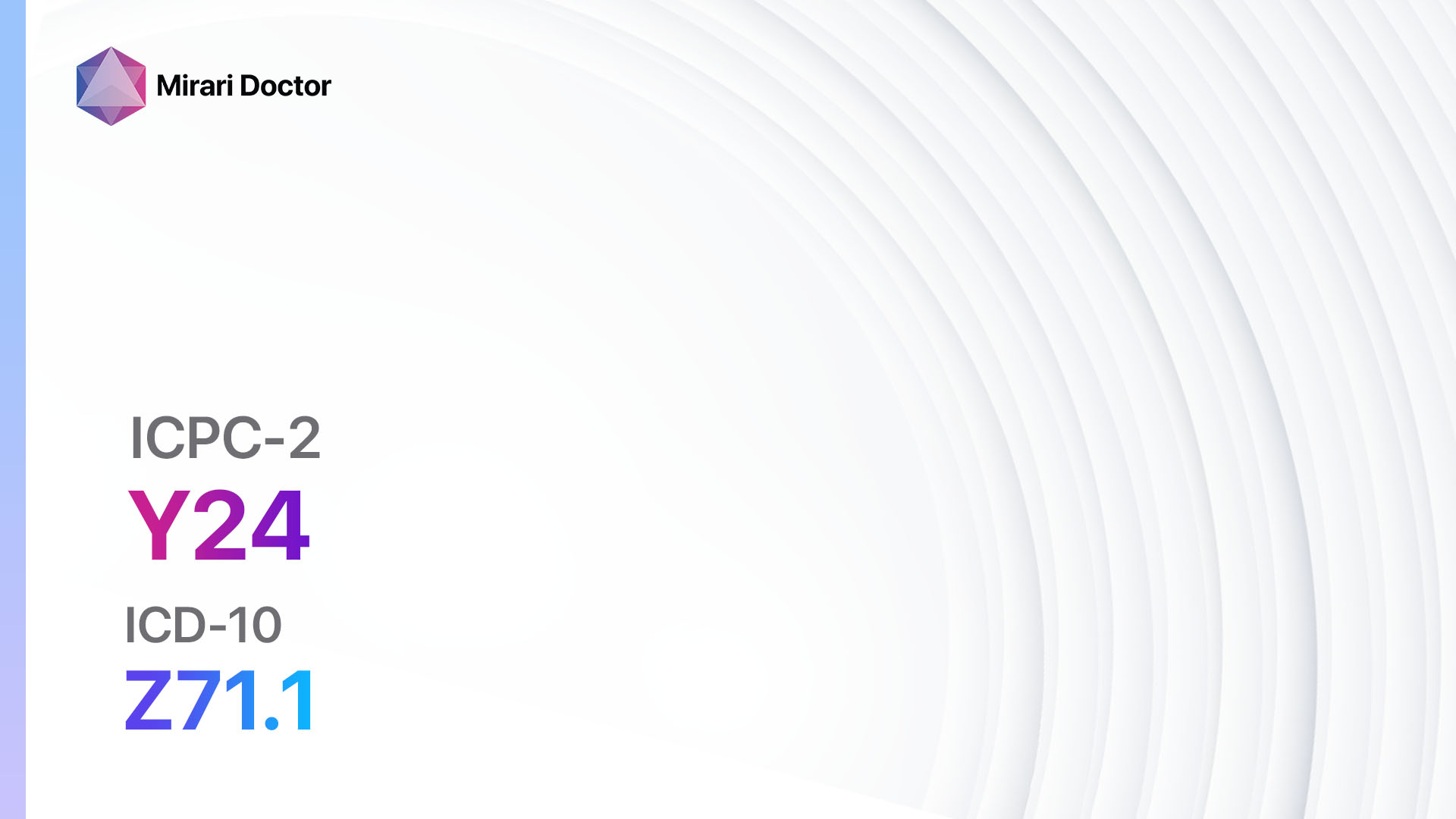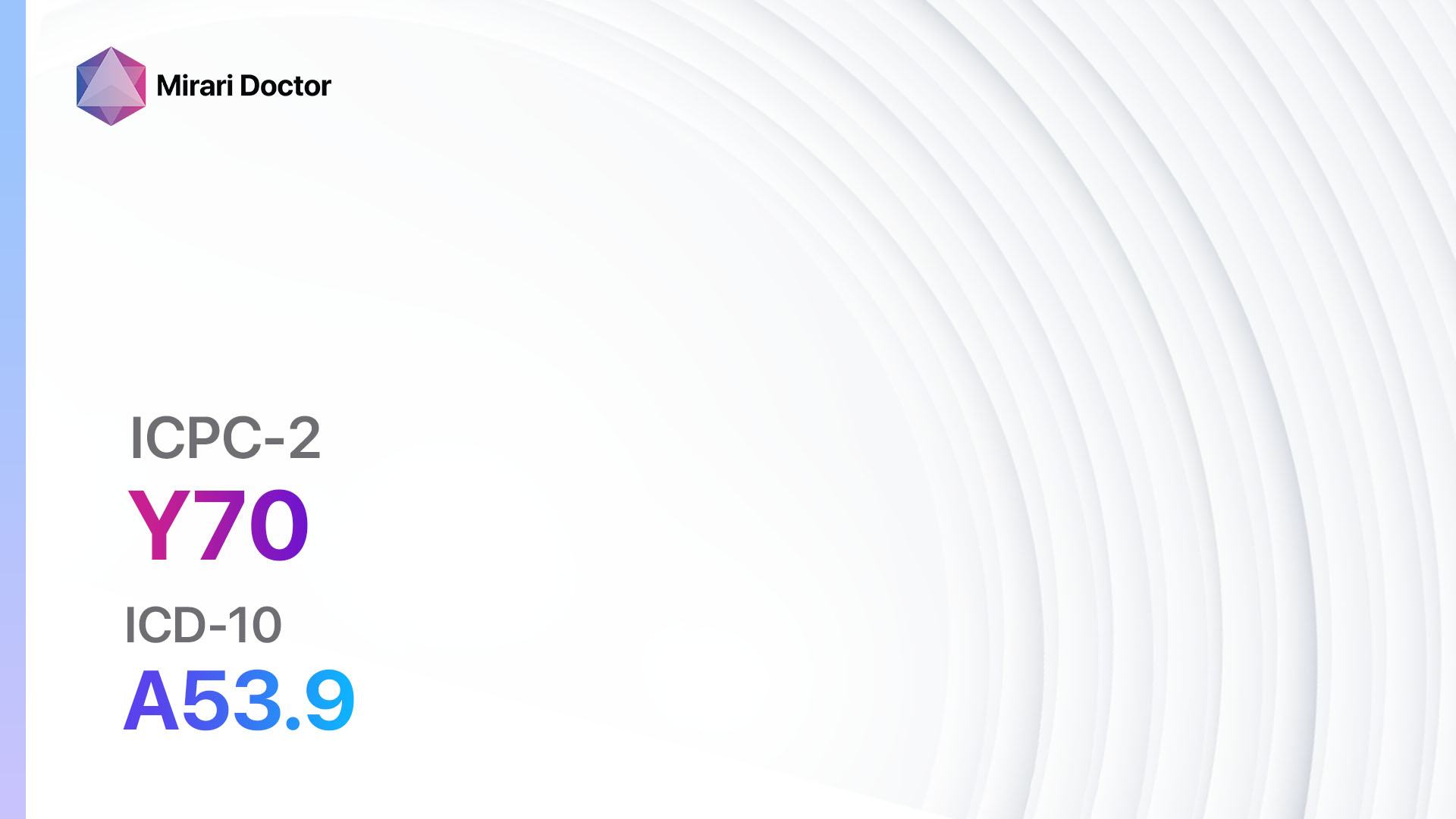
Introduction
Syphilis is a sexually transmitted infection caused by the bacterium Treponema pallidum. It can be transmitted through sexual contact, including vaginal, anal, and oral sex[1]. Syphilis can have serious complications if left untreated, including damage to the heart, brain, and other organs[2]. The aim of this guide is to provide a comprehensive overview of the diagnosis and possible interventions for syphilis in males.
Codes
- ICPC-2 Code: Y70 Syphilis male
- ICD-10 Code: A53.9 Syphilis, unspecified
Symptoms
- Chancre: A painless sore that appears at the site of infection, usually on the genitals, rectum, or mouth[3].
- Rash: A non-itchy rash that typically starts on the trunk and spreads to other parts of the body[4].
- Flu-like symptoms: Fever, fatigue, headache, sore throat, and swollen lymph nodes.
Symptoms may vary based on the stage of the disease[5].
Causes
- Sexual contact with an infected person
- Transmission from mother to child during childbirth[6]
Diagnostic Steps
Medical History
- Gather information about the patient’s sexual history, including recent sexual partners and practices.
- Ask about any previous diagnosis or treatment for sexually transmitted infections.
- Assess for any symptoms or signs related to syphilis[7].
Physical Examination
- Examine the genitals, rectum, and mouth for any visible signs of infection, such as chancres or rashes.
- Check for enlarged lymph nodes.
- Evaluate for any other signs or symptoms that may indicate syphilis[8].
Laboratory Tests
- Venereal Disease Research Laboratory (VDRL) test: A blood test that checks for antibodies against the bacteria that cause syphilis.
- Rapid Plasma Reagin (RPR) test: Another blood test that detects antibodies to syphilis.
- Treponemal tests: These tests detect specific antibodies to Treponema pallidum, including the fluorescent treponemal antibody absorption (FTA-ABS) test and the Treponema pallidum particle agglutination (TP-PA) test[9].
Diagnostic Imaging
- No specific diagnostic imaging is required for the diagnosis of infection[10].
Other Tests
- Dark-field microscopy: A microscopic examination of fluid from a chancre to directly visualize the bacteria.
- Cerebrospinal fluid (CSF) analysis: If neurosyphilis is suspected, a lumbar puncture may be performed to analyze the CSF for signs of infection.
Follow-up and Patient Education
- Provide education on safe sex practices and the importance of notifying sexual partners for testing and treatment.
- Advise the patient to complete the full course of treatment and follow-up as recommended by the healthcare provider.
Possible Interventions
Traditional Interventions
Medications:
Top 5 drugs for Syphilis in males:
- Penicillin G:
- Cost: Varies depending on the formulation and dose.
- Contraindications: Allergy to penicillin.
- Side effects: Allergic reactions, gastrointestinal upset.
- Severe side effects: Anaphylaxis, hematologic abnormalities.
- Drug interactions: None significant.
- Warning: Requires close monitoring for allergic reactions during administration.
- Doxycycline:
- Cost: Generic versions can be $10-$50/month.
- Contraindications: Children under 8 years old, pregnancy.
- Side effects: Gastrointestinal upset, sun sensitivity.
- Severe side effects: Severe allergic reactions, liver damage.
- Drug interactions: Antacids, other antibiotics.
- Warning: Avoid taking with dairy products or antacids.
- Ceftriaxone:
- Cost: Varies depending on the formulation and dose.
- Contraindications: Allergy to cephalosporins.
- Side effects: Gastrointestinal upset, injection site reactions.
- Severe side effects: Severe allergic reactions, pseudomembranous colitis.
- Drug interactions: None significant.
- Warning: Requires close monitoring for allergic reactions during administration.
- Azithromycin:
- Cost: Generic versions can be $5-$30/month.
- Contraindications: Allergy to macrolide antibiotics.
- Side effects: Gastrointestinal upset, headache.
- Severe side effects: Severe allergic reactions, liver damage.
- Drug interactions: None significant.
- Warning: May interact with other medications, consult with healthcare provider.
- Tetracycline:
- Cost: Generic versions can be $10-$50/month.
- Contraindications: Children under 8 years old, pregnancy.
- Side effects: Gastrointestinal upset, sun sensitivity.
- Severe side effects: Severe allergic reactions, liver damage.
- Drug interactions: Antacids, other antibiotics.
- Warning: Avoid taking with dairy products or antacids.
Alternative Drugs :
- Erythromycin: Useful for patients with penicillin allergies.
- Cefixime: An alternative to ceftriaxone for patients unable to tolerate it.
- Ciprofloxacin: An alternative for patients unable to tolerate other antibiotics.
- Levofloxacin: Another alternative for patients with penicillin allergies.
- Daptomycin: Reserved for severe cases or cases with resistance to other antibiotics.
Surgical Procedures:
- No surgical procedures are typically indicated for the treatment of syphilis.
Alternative Interventions
- Acupuncture: May help with symptom management and overall well-being. Cost: $60-$120 per session.
- Herbal supplements: Some herbs, such as echinacea and garlic, may have potential benefits for supporting the immune system. Cost: Varies depending on the specific supplement.
- Homeopathy: Some homeopathic remedies may be used as supportive measures in the treatment of syphilis. Cost: Varies depending on the specific remedy and provider.
- Nutritional therapy: A balanced diet rich in vitamins and minerals may help support the immune system and overall health. Cost: Varies depending on dietary choices.
- Stress management techniques: Stress reduction techniques, such as meditation and yoga, may help support overall well-being. Cost: Varies depending on the specific technique and provider.
Lifestyle Interventions
- Abstaining from sexual activity during treatment and until the infection is cleared.
- Practicing safe sex, including consistent and correct use of condoms.
- Avoiding sharing needles or other drug paraphernalia.
- Maintaining good hygiene practices, including regular bathing and washing of hands.
- Avoiding excessive alcohol consumption and drug use.
- Getting regular check-ups and screenings for sexually transmitted infections.
It is important to note that the cost ranges provided are approximate and may vary depending on the location and availability of the interventions. It is recommended to consult with a healthcare provider for personalized advice and guidance on the best treatment options for syphilis in males.
Mirari Cold Plasma Alternative Intervention
Understanding Mirari Cold Plasma
- Safe and Non-Invasive Treatment: Mirari Cold Plasma is a safe and non-invasive treatment option for various skin conditions. It does not require incisions, minimizing the risk of scarring, bleeding, or tissue damage.
- Efficient Extraction of Foreign Bodies: Mirari Cold Plasma facilitates the removal of foreign bodies from the skin by degrading and dissociating organic matter, allowing easier access and extraction.
- Pain Reduction and Comfort: Mirari Cold Plasma has a local analgesic effect, providing pain relief during the treatment, making it more comfortable for the patient.
- Reduced Risk of Infection: Mirari Cold Plasma has antimicrobial properties, effectively killing bacteria and reducing the risk of infection.
- Accelerated Healing and Minimal Scarring: Mirari Cold Plasma stimulates wound healing and tissue regeneration, reducing healing time and minimizing the formation of scars.
Mirari Cold Plasma Prescription
Video instructions for using Mirari Cold Plasma Device – Y70 Syphilis male (ICD-10:A53.9)
| Mild | Moderate | Severe |
| Mode setting: 1 (Infection) Location: 0 (Localized) Morning: 15 minutes, Evening: 15 minutes |
Mode setting: 1 (Infection) Location: 0 (Localized) Morning: 30 minutes, Lunch: 30 minutes, Evening: 30 minutes |
Mode setting: 1 (Infection) Location: 0 (Localized) Morning: 30 minutes, Lunch: 30 minutes, Evening: 30 minutes |
| Mode setting: 2 (Wound Healing) Location: 0 (Localized) Morning: 15 minutes, Evening: 15 minutes |
Mode setting: 2 (Wound Healing) Location: 0 (Localized) Morning: 30 minutes, Lunch: 30 minutes, Evening: 30 minutes |
Mode setting: 2 (Wound Healing) Location: 0 (Localized) Morning: 30 minutes, Lunch: 30 minutes, Evening: 30 minutes |
| Mode setting: 5 (Prostatitis Therapy) Location: 2 (Prostate & Uterus) Morning: 15 minutes, Evening: 15 minutes |
Mode setting: 5 (Prostatitis Therapy) Location: 2 (Prostate & Uterus) Morning: 30 minutes, Lunch: 30 minutes, Evening: 30 minutes |
Mode setting: 5 (Prostatitis Therapy) Location: 2 (Prostate & Uterus) Morning: 30 minutes, Lunch: 30 minutes, Evening: 30 minutes |
| Mode setting: 7 (Immunotherapy) Location: 1 (Sacrum) Morning: 15 minutes, Evening: 15 minutes |
Mode setting: 7 (Immunotherapy) Location: 1 (Sacrum) Morning: 30 minutes, Lunch: 30 minutes, Evening: 30 minutes |
Mode setting: 7 (Immunotherapy) Location: 1 (Sacrum) Morning: 30 minutes, Lunch: 30 minutes, Evening: 30 minutes |
| Total Morning: 60 minutes approx. $10 USD, Evening: 60 minutes approx. $10 USD |
Total Morning: 120 minutes approx. $20 USD, Lunch: 120 minutes approx. $20 USD, Evening: 120 minutes approx. $20 USD, |
Total Morning: 120 minutes approx. $20 USD, Lunch: 120 minutes approx. $20 USD, Evening: 120 minutes approx. $20 USD, |
| Usual treatment for 7-60 days approx. $140 USD – $1200 USD | Usual treatment for 6-8 weeks approx. $2,520 USD – $3,360 USD |
Usual treatment for 3-6 months approx. $5,400 USD – $10,800 USD
|
 |
|
Use the Mirari Cold Plasma device to treat Syphilis male effectively.
WARNING: MIRARI COLD PLASMA IS DESIGNED FOR THE HUMAN BODY WITHOUT ANY ARTIFICIAL OR THIRD PARTY PRODUCTS. USE OF OTHER PRODUCTS IN COMBINATION WITH MIRARI COLD PLASMA MAY CAUSE UNPREDICTABLE EFFECTS, HARM OR INJURY. PLEASE CONSULT A MEDICAL PROFESSIONAL BEFORE COMBINING ANY OTHER PRODUCTS WITH USE OF MIRARI.
Step 1: Cleanse the Skin
- Start by cleaning the affected area of the skin with a gentle cleanser or mild soap and water. Gently pat the area dry with a clean towel.
Step 2: Prepare the Mirari Cold Plasma device
- Ensure that the Mirari Cold Plasma device is fully charged or has fresh batteries as per the manufacturer’s instructions. Make sure the device is clean and in good working condition.
- Switch on the Mirari device using the power button or by following the specific instructions provided with the device.
- Some Mirari devices may have adjustable settings for intensity or treatment duration. Follow the manufacturer’s instructions to select the appropriate settings based on your needs and the recommended guidelines.
Step 3: Apply the Device
- Place the Mirari device in direct contact with the affected area of the skin. Gently glide or hold the device over the skin surface, ensuring even coverage of the area experiencing.
- Slowly move the Mirari device in a circular motion or follow a specific pattern as indicated in the user manual. This helps ensure thorough treatment coverage.
Step 4: Monitor and Assess:
- Keep track of your progress and evaluate the effectiveness of the Mirari device in managing your Syphilis male. If you have any concerns or notice any adverse reactions, consult with your health care professional.
Note
This guide is for informational purposes only and should not replace the advice of a medical professional. Always consult with your healthcare provider or a qualified medical professional for personal advice, diagnosis, or treatment. Do not solely rely on the information presented here for decisions about your health. Use of this information is at your own risk. The authors of this guide, nor any associated entities or platforms, are not responsible for any potential adverse effects or outcomes based on the content.
Mirari Cold Plasma System Disclaimer
- Purpose: The Mirari Cold Plasma System is a Class 2 medical device designed for use by trained healthcare professionals. It is registered for use in Thailand and Vietnam. It is not intended for use outside of these locations.
- Informational Use: The content and information provided with the device are for educational and informational purposes only. They are not a substitute for professional medical advice or care.
- Variable Outcomes: While the device is approved for specific uses, individual outcomes can differ. We do not assert or guarantee specific medical outcomes.
- Consultation: Prior to utilizing the device or making decisions based on its content, it is essential to consult with a Certified Mirari Tele-Therapist and your medical healthcare provider regarding specific protocols.
- Liability: By using this device, users are acknowledging and accepting all potential risks. Neither the manufacturer nor the distributor will be held accountable for any adverse reactions, injuries, or damages stemming from its use.
- Geographical Availability: This device has received approval for designated purposes by the Thai and Vietnam FDA. As of now, outside of Thailand and Vietnam, the Mirari Cold Plasma System is not available for purchase or use.
References
- Centers for Disease Control and Prevention. (2022). Syphilis – CDC Fact Sheet. Retrieved from https://www.cdc.gov/std/syphilis/stdfact-syphilis.htm
- World Health Organization. (2022). Syphilis. Retrieved from https://www.who.int/news-room/fact-sheets/detail/syphilis
- Peeling, R. W., Mabey, D., Kamb, M. L., Chen, X. S., Radolf, J. D., & Benzaken, A. S. (2017). Syphilis. Nature Reviews Disease Primers, 3, 17073.
- Workowski, K. A., & Bolan, G. A. (2015). Sexually transmitted diseases treatment guidelines, 2015. MMWR Recommendations and Reports, 64(RR-03), 1-137.
- Hook, E. W. (2017). Syphilis. The Lancet, 389(10078), 1550-1557.
- Gomez, G. B., Kamb, M. L., Newman, L. M., Mark, J., Broutet, N., & Hawkes, S. J. (2013). Untreated maternal syphilis and adverse outcomes of pregnancy: a systematic review and meta-analysis. Bulletin of the World Health Organization, 91, 217-226.
- Tuddenham, S., & Ghanem, K. G. (2015). Emerging trends and persistent challenges in the management of adult syphilis. BMC Infectious Diseases, 15, 351.
- Stamm, L. V. (2015). Syphilis: Re-emergence of an old foe. Microbial Cell, 2(4), 127-129.
- Morshed, M. G., & Singh, A. E. (2015). Recent trends in the serologic diagnosis of syphilis. Clinical and Vaccine Immunology, 22(2), 137-147.
- Ghanem, K. G. (2010). Neurosyphilis: A historical perspective and review. CNS Neuroscience & Therapeutics, 16(5), e157-e168.
Related articles
Made in USA


